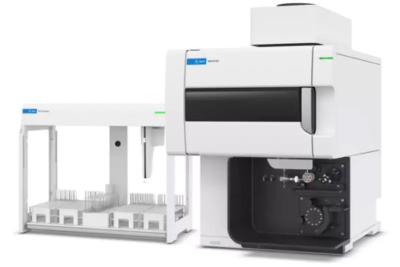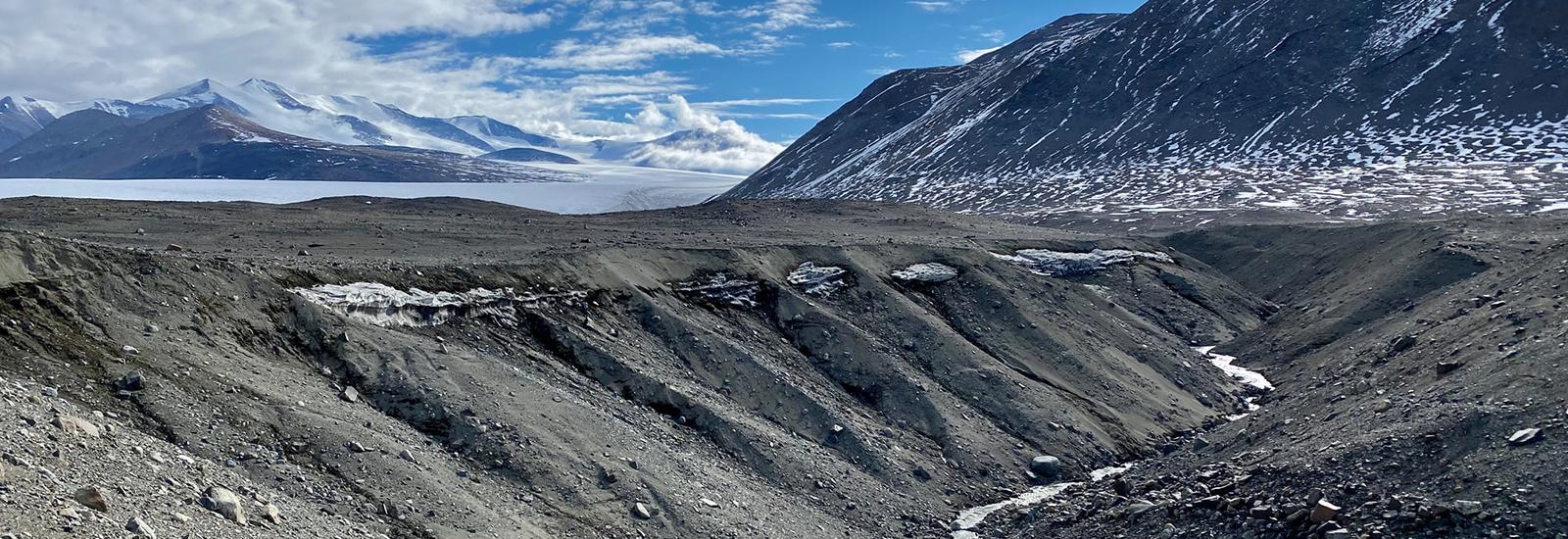Polar ENV core research focuses on the geochemistry of ice-free and ice-covered environments in the Arctic, Antarctic and urban areas, and applying this knowledge towards understanding landscape development, salt and nutrient cycling, biogeography, and habitat suitability throughout the Solar System. We are particularly interested in research within the following themes:
- How does the geochemistry of soil and ice in the cryosphere influence ecosystem development and inform habitat suitability on Earth and within the Solar System?
- What are the current, past, and future effects of global change on resource-limited arid environments?
- How do natural systems, urban geochemistry, and equity intersect?
- How have anthropogenic processes perturbed biogeochemical cycles?
Current Projects
McMurdo Dry Valleys LTER
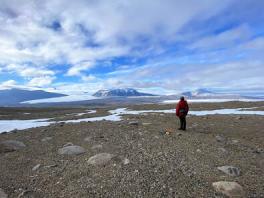
The McMurdo Dry Valleys Long Term Ecological Research Project is an interdisciplinary study of the aquatic and terrestrial ecosystems in a cold desert region of Antarctica. In 1992 this area was selected as a study site within the National Science Foundation's Long-term Ecological Research (LTER) Program. Details about the research can be reviewed through the original 1992 research proposal to the National Science Foundation, or the most recent 2022 proposal, resulting in funding for another 6 years, at McMurdo Dry Valleys LTER website.
NSF OPP 2224760; PI Michael Gooseff (CU Boulder)
Ice-Marginal Lake Biogeochemistry
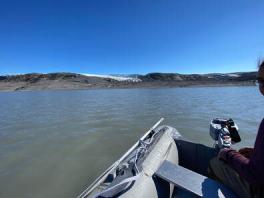
Lake Tininnilik is a large ice-marginal lake restrained by an ice dam along Sarqardliup Glacier in western Greenland. It drains approximately every 10 years into a local fjord, most recently in 2021, exposing previously inundated sediments. This research will analyze water samples from different lobes of Lake Tininnilik and exposed sediments to understand the microbial composition and how ice-marginal lakes influence the availability of nutrients for near-shore and open-ocean ecosystems.
NSF OPP 2224824; PI Melisa Diaz (Ohio State)
Processes at Ice-Ocean Interfaces
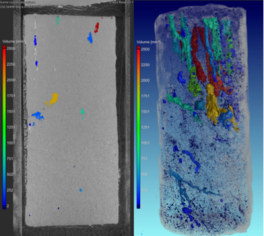
Sea ice plays an important role in regulating Earth’s energy balance, and polar ice ecosystems are among the largest on Earth. As sea ice forms, brine pockets, and channels are created that may extend through much of its thickness. These channels are known hotspots for biogeochemical cycling. Our study will develop a novel approach to correcting remotely sensed freeboard data from ICESat-2 and couple those measurements to sea ice biogeochemical cycling. The approach can be extrapolated to other ice-covered regions on Earth and in our solar system.
NASA 22-IDS22-0036; PI Melisa Diaz (Ohio State)
Ice-Covered Methane Lakes
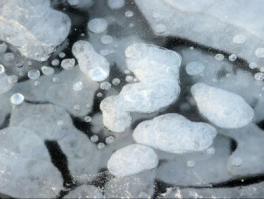
Life on Earth can often be found at the boundary between two physical layers, as energy exchange often occurs at these sites. On Ocean Worlds, like Europa, Enceladus, and Titan, the ice-water interface may be rich with materials from the ocean below and with compounds delivered from the ice above, thus providing a potentially habitable interface. Through this project, we will study the ice-water interface of Arctic thermokarst lakes that are seeping methane, which is trapped at the interface during the fall/winter freeze-over period.
NASA 23-PSTAR23_2-0044; PI Kevin Hand (NASA JPL)
Girls* On Rock
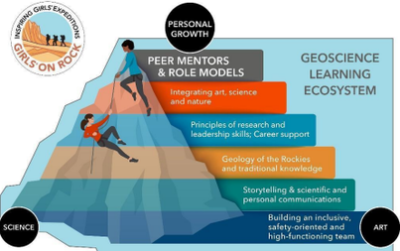
Girls* On Rock (GOR) is a pre-college Geoscience Learning Ecosystem (GLE) consisting of a backcountry expedition followed by ongoing cohort and career development activities. The program is designed for diverse youth 16-17 years old identifying as girls* (cis or trans) or nonbinary from backgrounds that are historically underrepresented in the Geosciences to explore the geologic and cultural history of the Rocky Mountains by interweaving scientific research, with artistic expression and physical challenges, such as rock climbing and backcountry exploration. GOR is a member of the Inspiring Girls* Expeditions (IGE) network.
NSF RISE 2325683' PI Melisa Diaz (Ohio State)
Dust Weathering On Glaciers
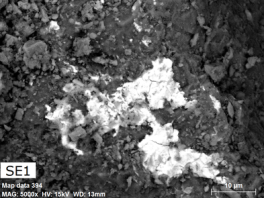
Despite low temperatures and the relative scarcity of liquid water, glacial systems can be a major source of trace metals, nutrients, and other weathering products to proglacial and marine systems. Little is understood about weathering mechanisms or the composition of major and trace nutrients in snow and supraglacial ice. This research will combine computer modeling and laboratory experiments to understand:
- What happens (chemically and physically) to glacier and snowpack dust during freezing and thawing.
- How to model the freezing and thawing of water and dust in glacier ice.
NSF OPP 2148067; PI Melisa Diaz (Ohio State)
Metal Redlining Network
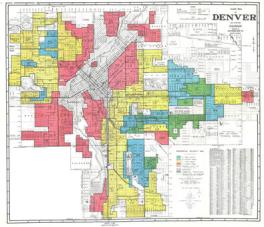
The Metal Redlining Network's central goal is to build a cross-city network that empowers research, education, and policy advocacy to advance Geohealth equity. We collaborate around a shared research question: Has redlining resulted in an unjust soil metal burden? Redlining is the systemic disinvestment in communities based on race, class, or other factors. We seek to answer our research question by examining metal pollution associated with the "Residential security zones" established by the Home Owner Loan Corporation prior to the 1950s. Learn more about the metal redlining network.
Recent Projects
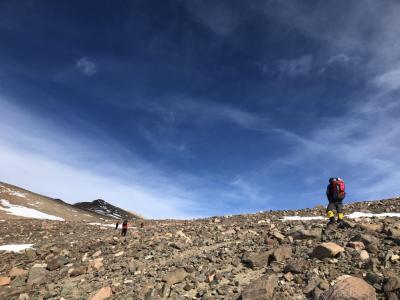
Glacial History and Ecosystem Response in Central Transantarctic Mountains
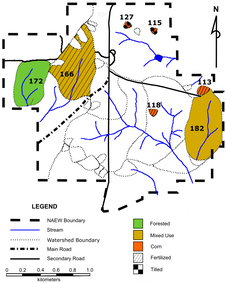
Agricultural Runoff Water Quality for Managed Landscapes
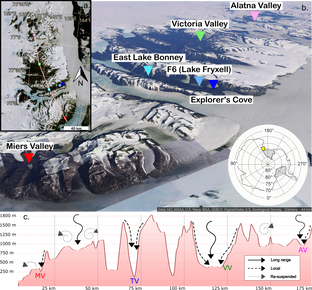
Dust Transport and Source in McMurdo Dry Valleys
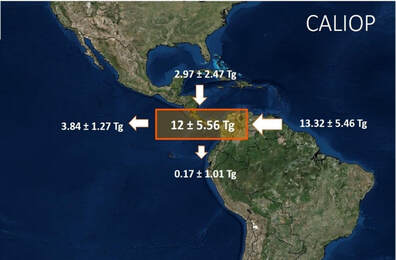
Dust Transport to the Americas
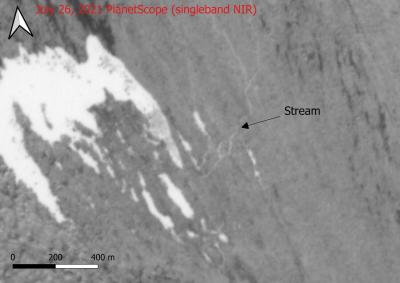
Surface Meltwater Features in Greenland
Instrumentation
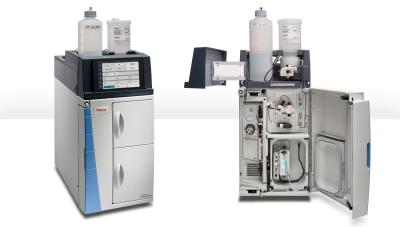
Dionex Integrion HPIC
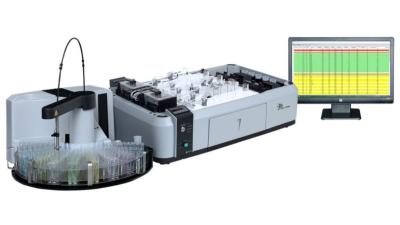
Skalar SAN++ Nutrient Analyzer
